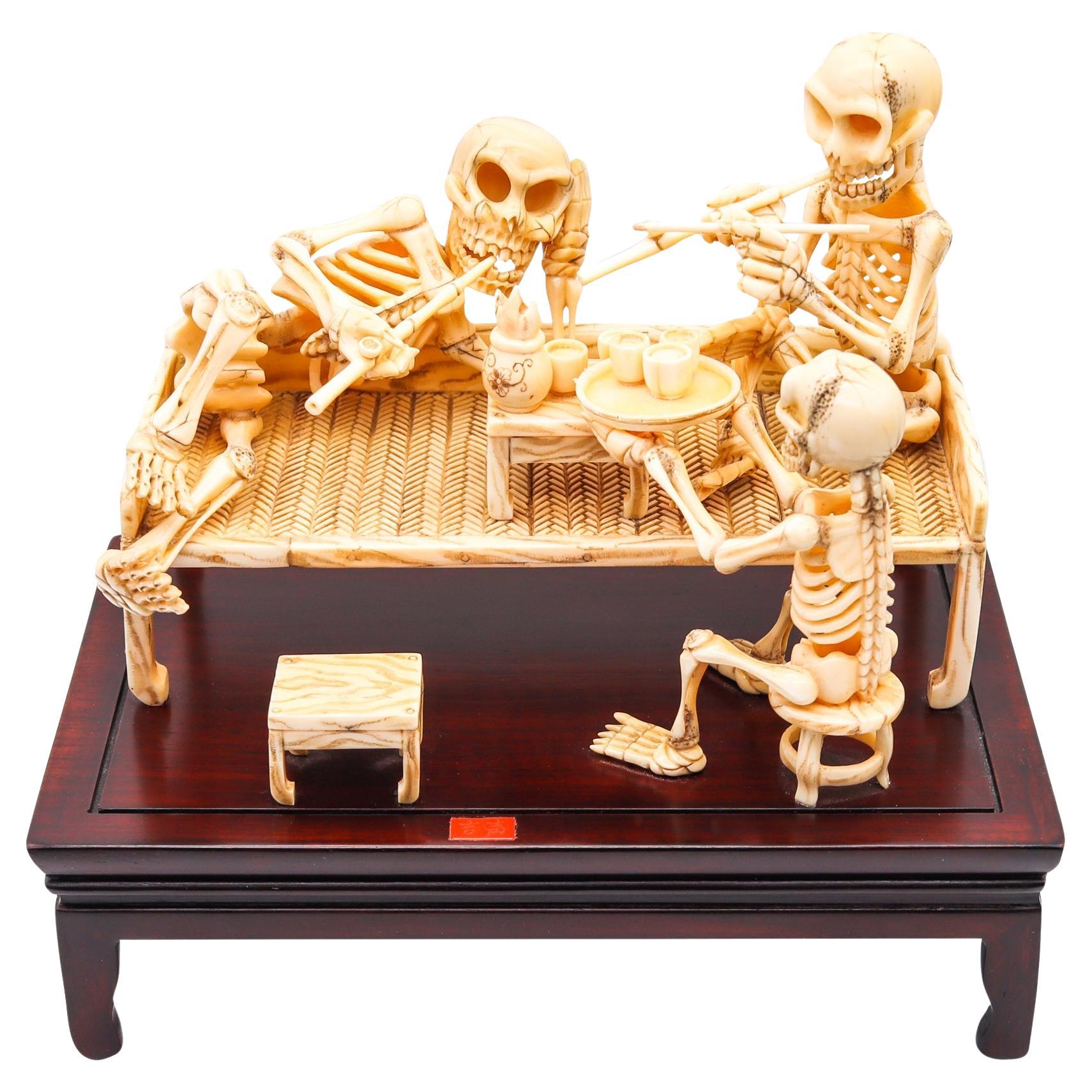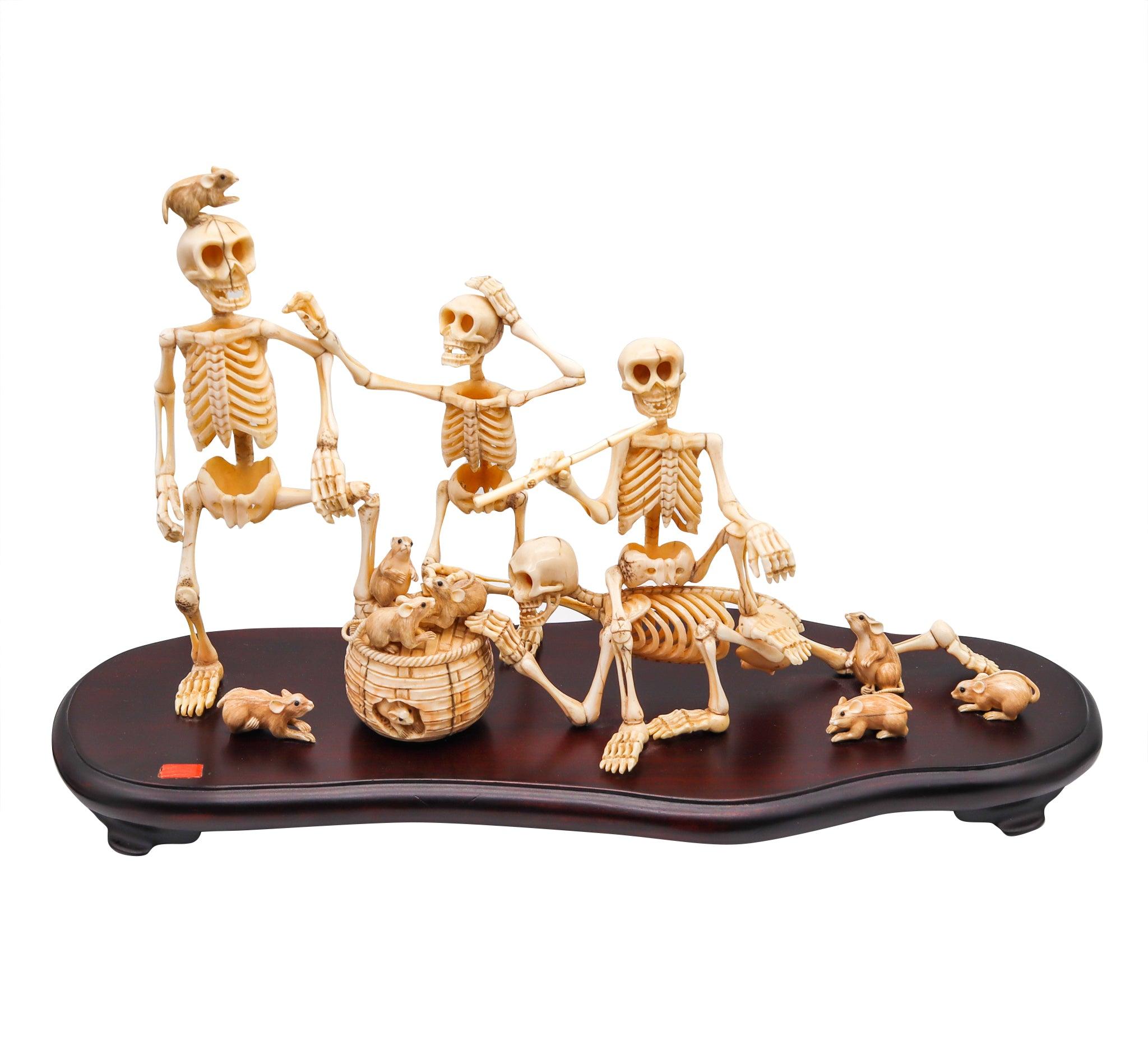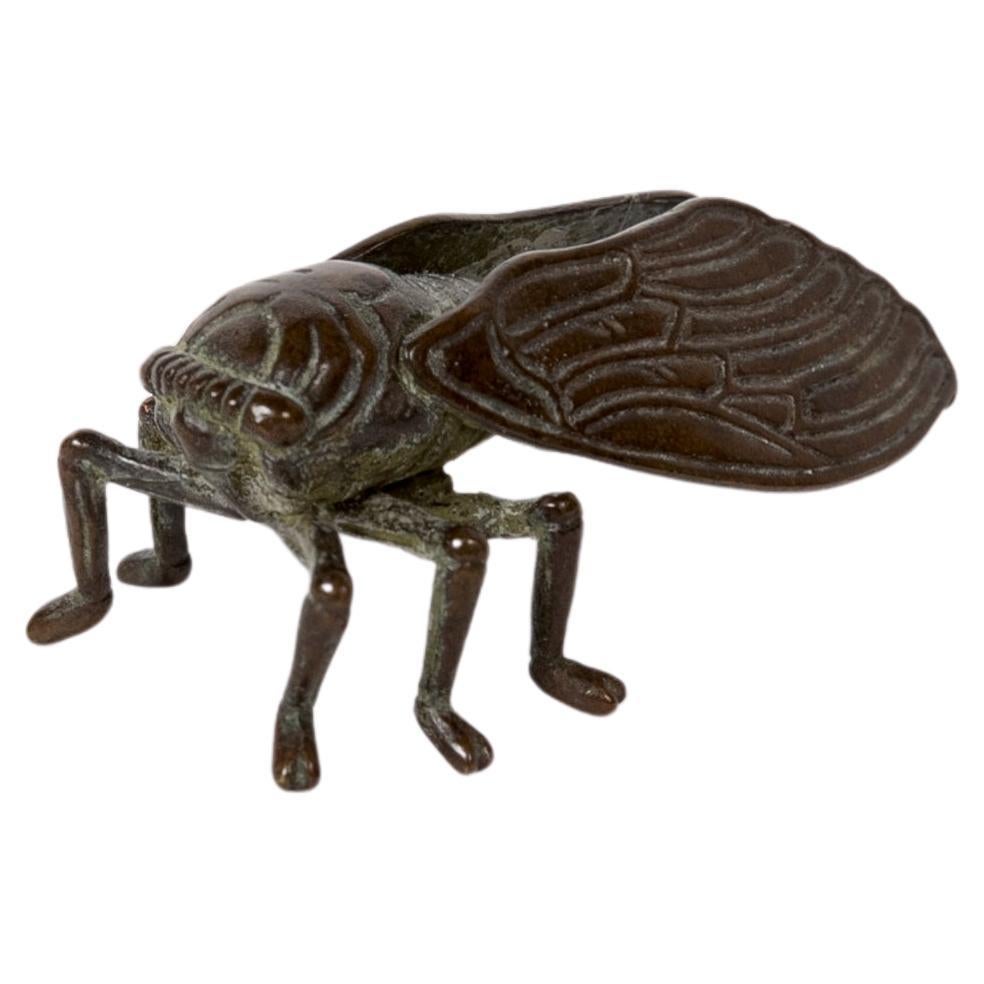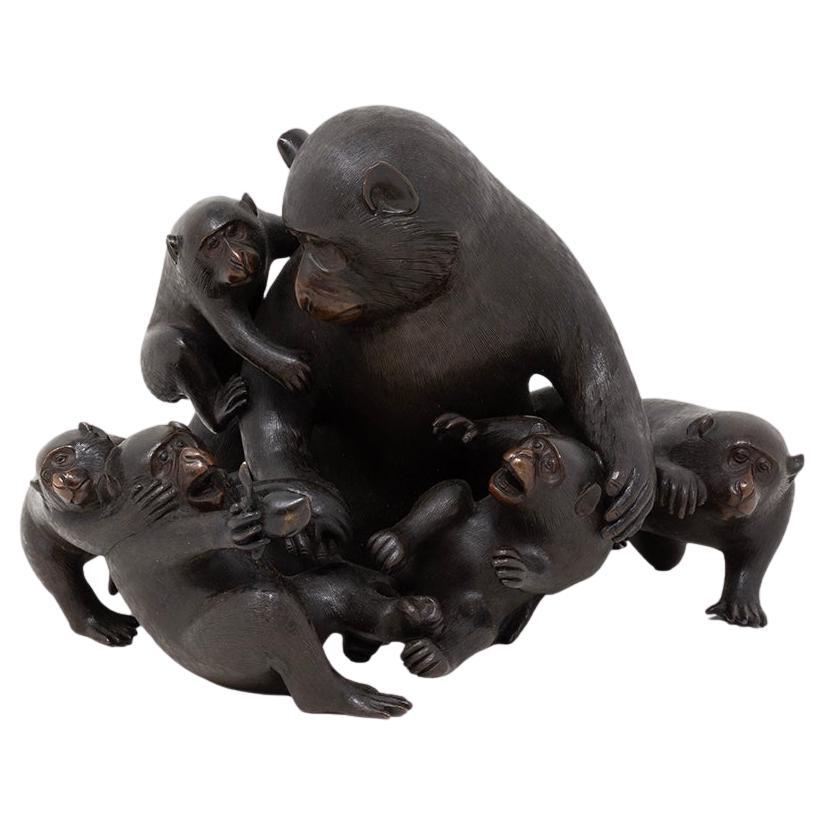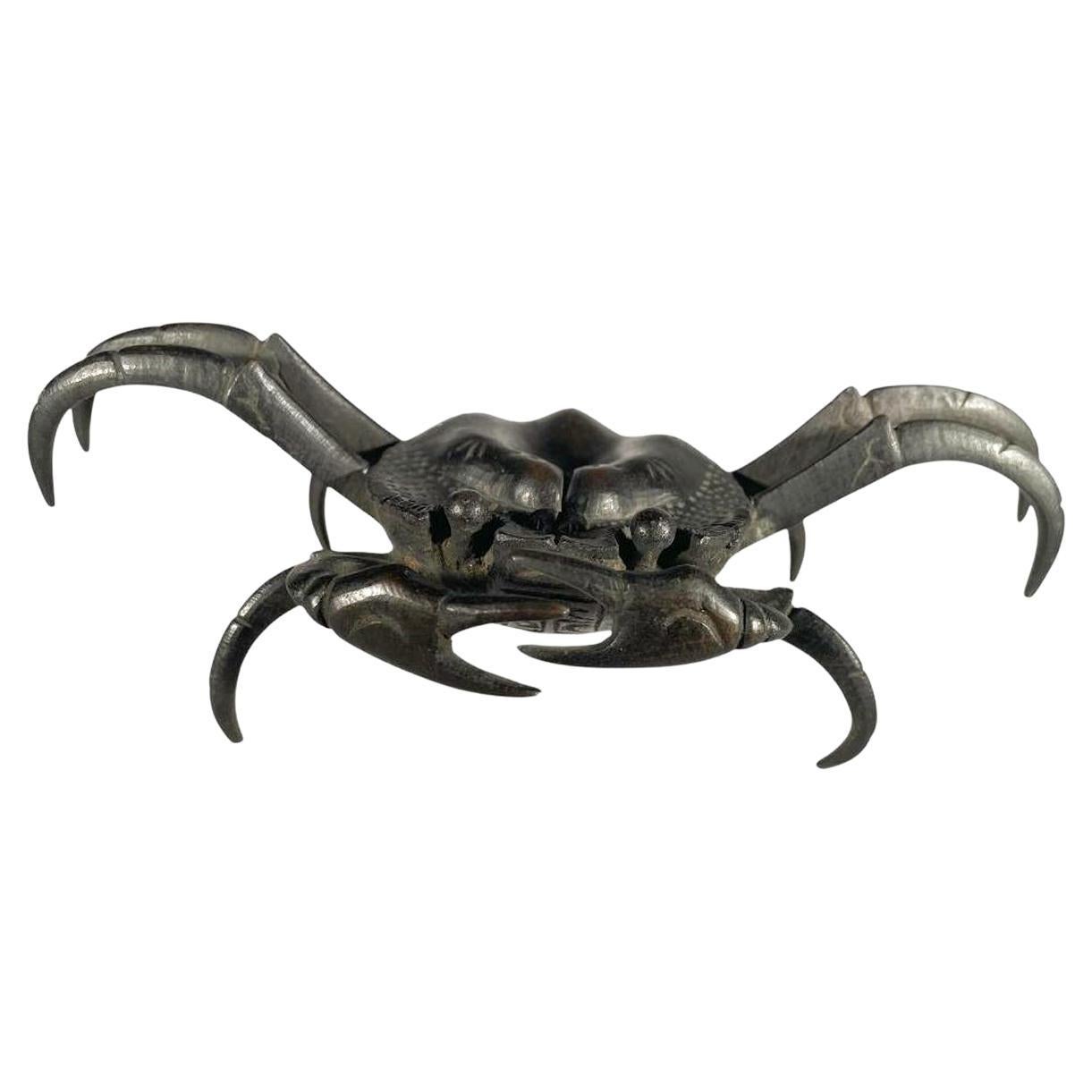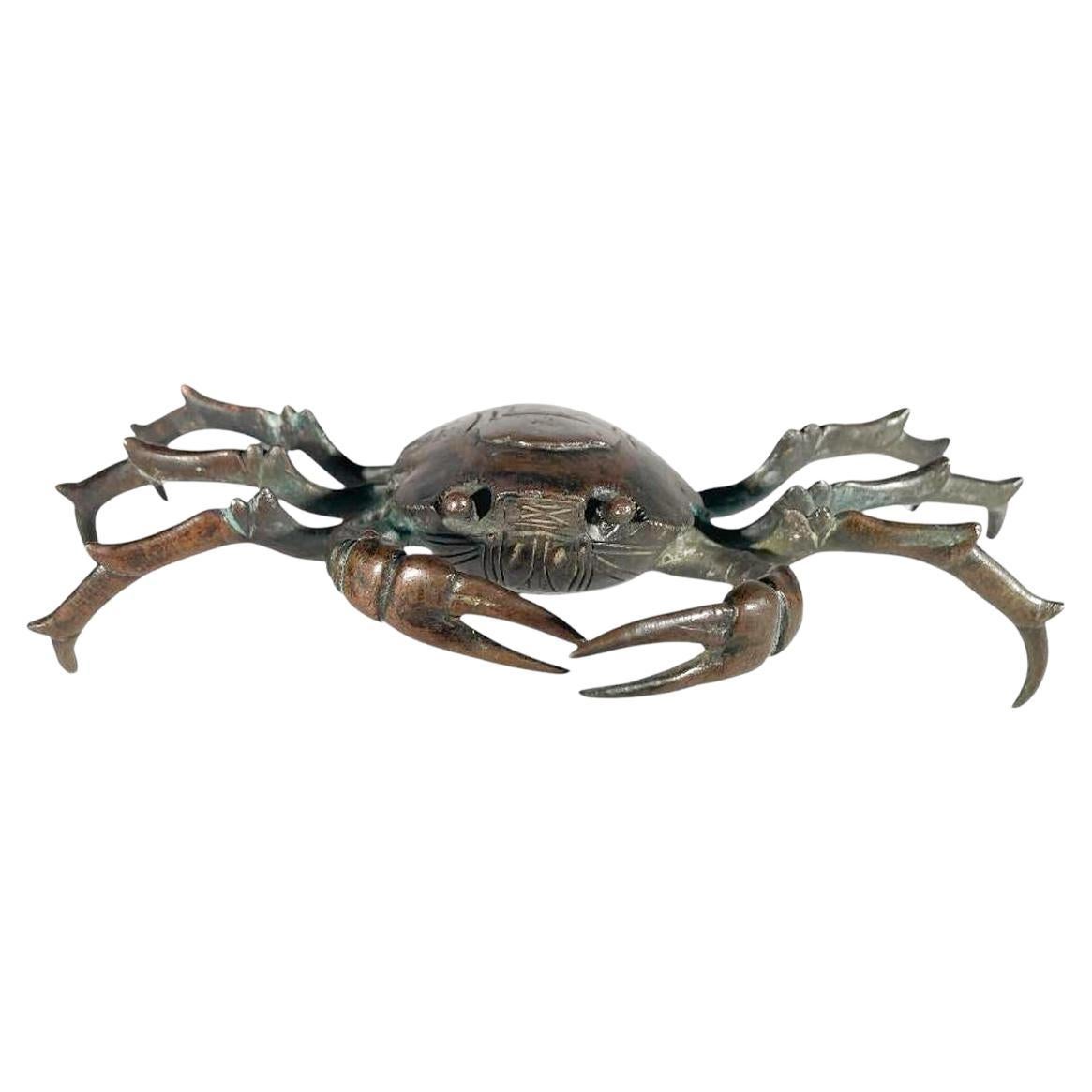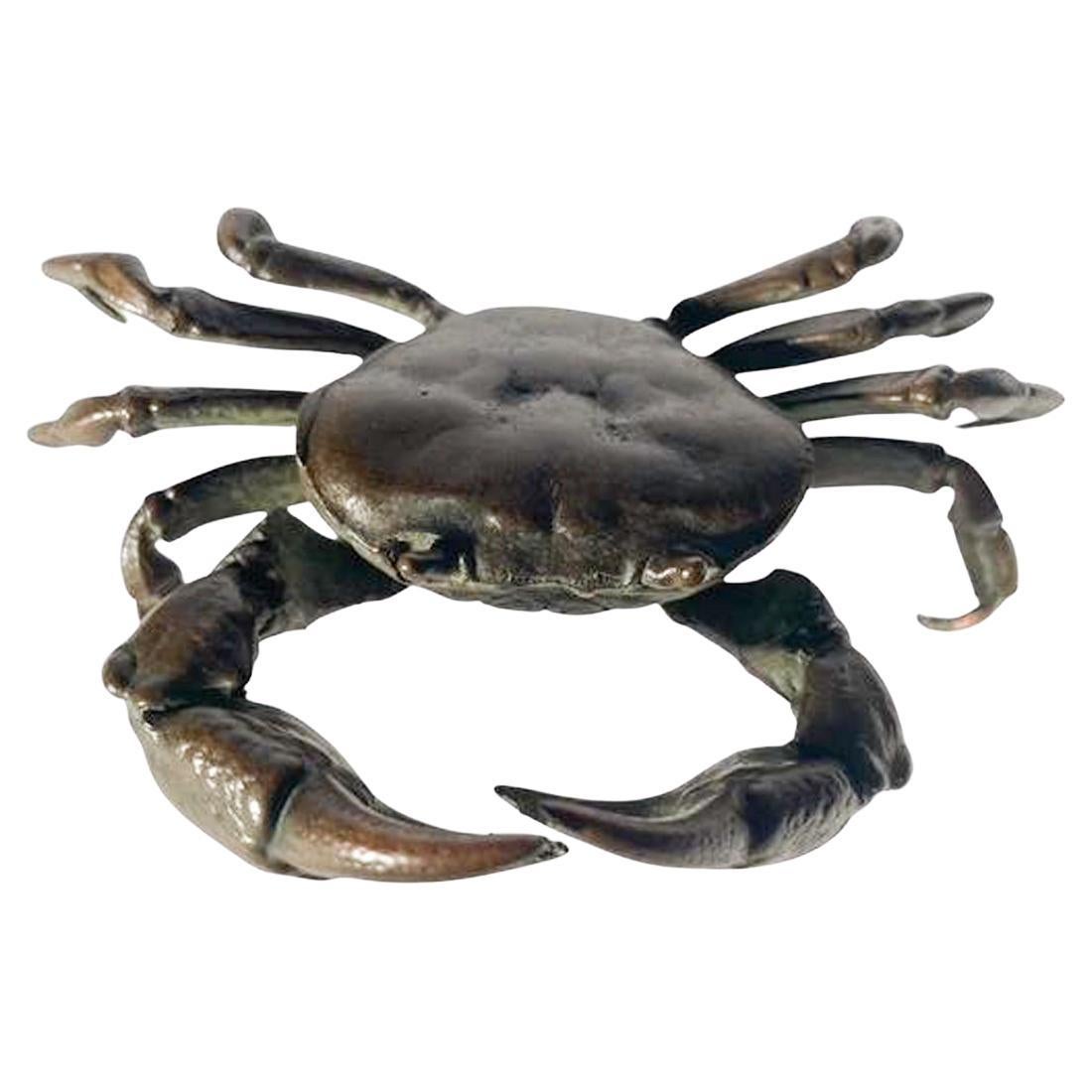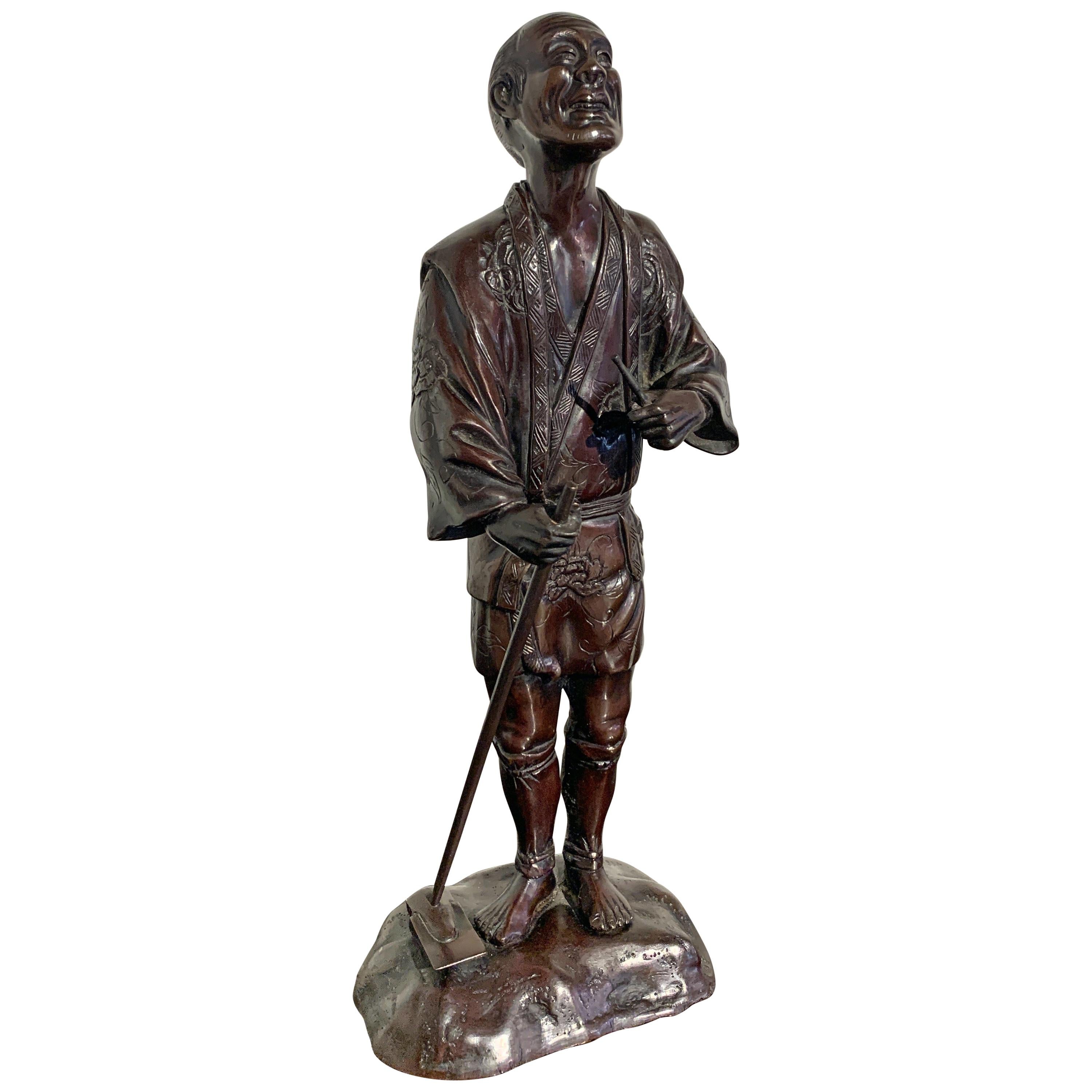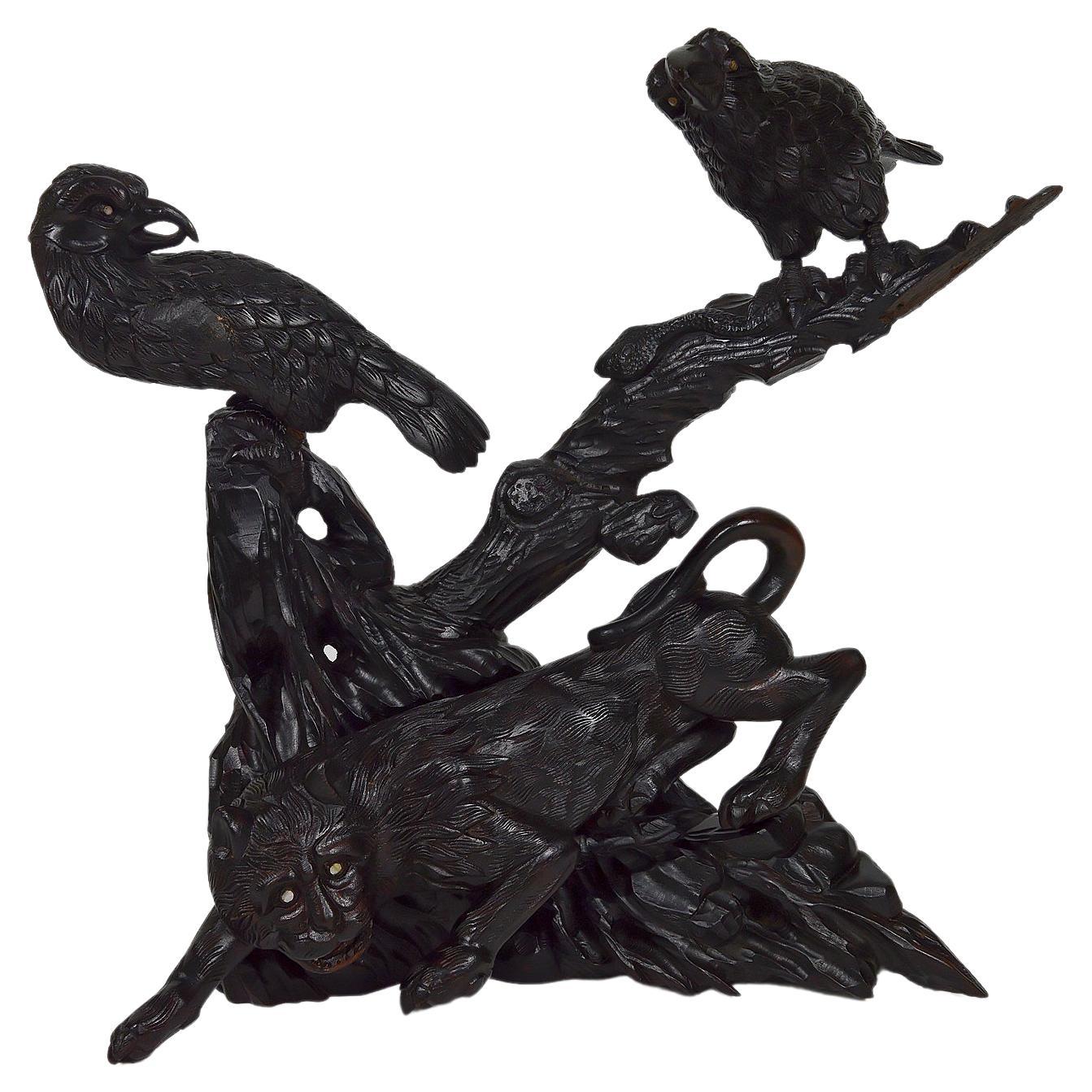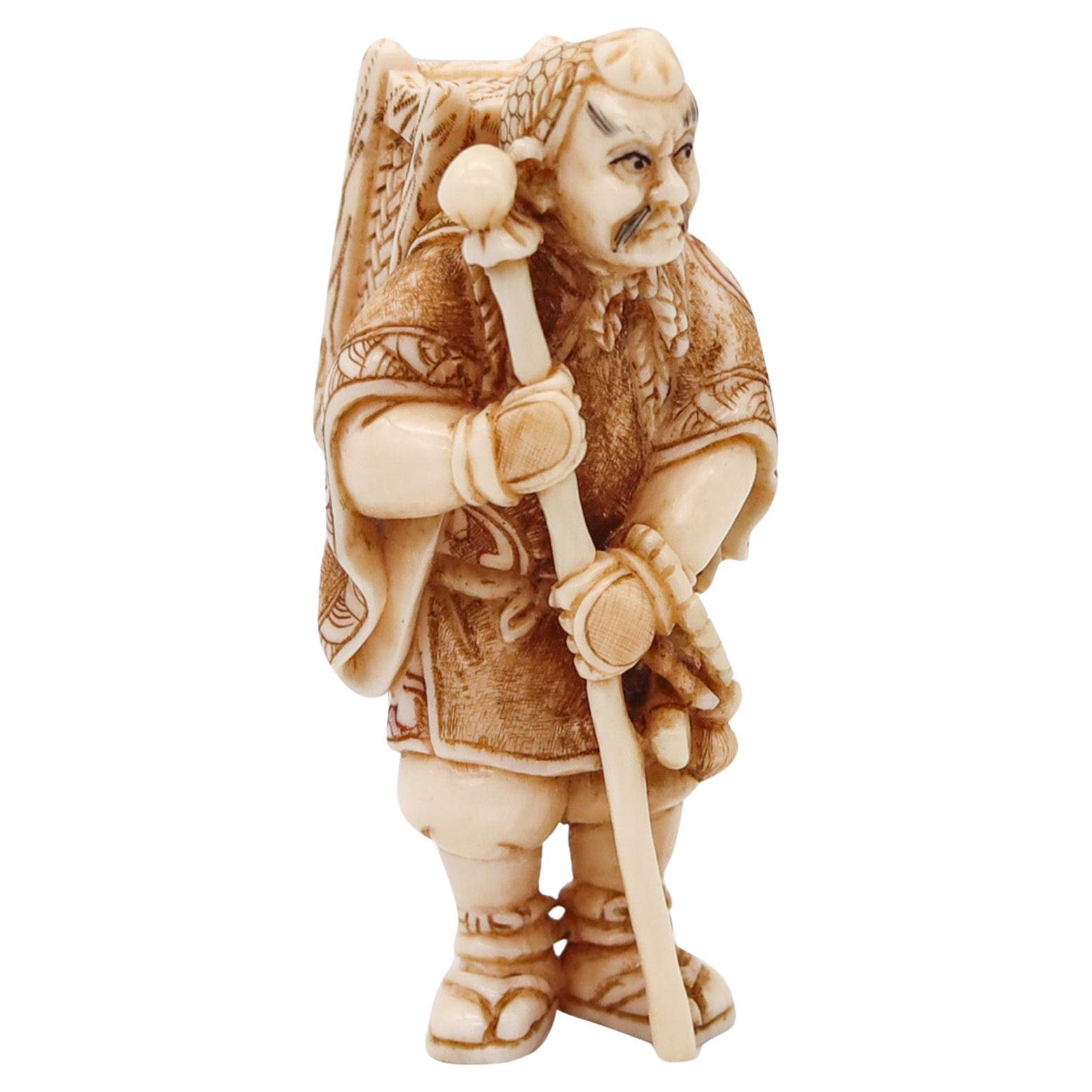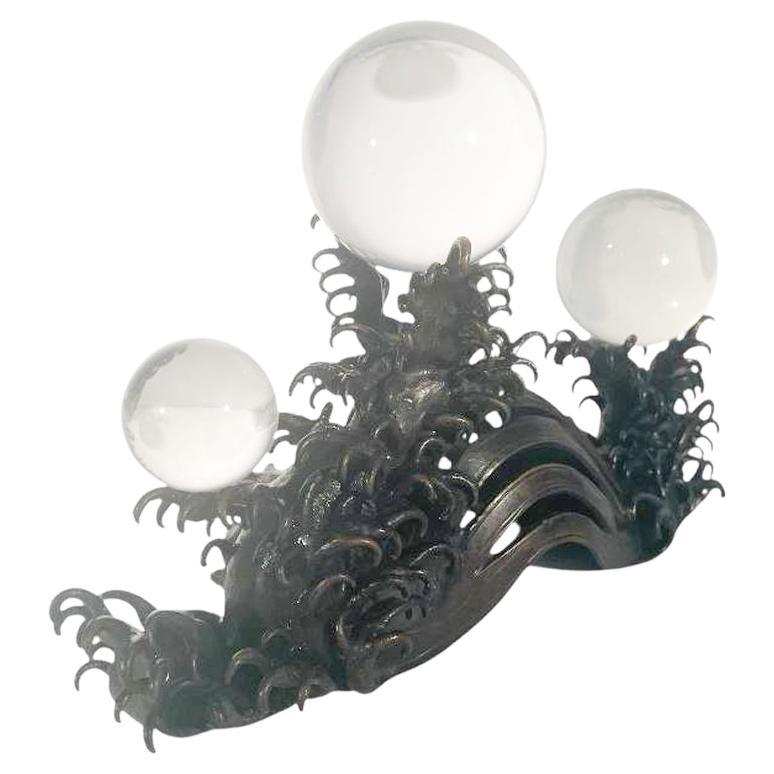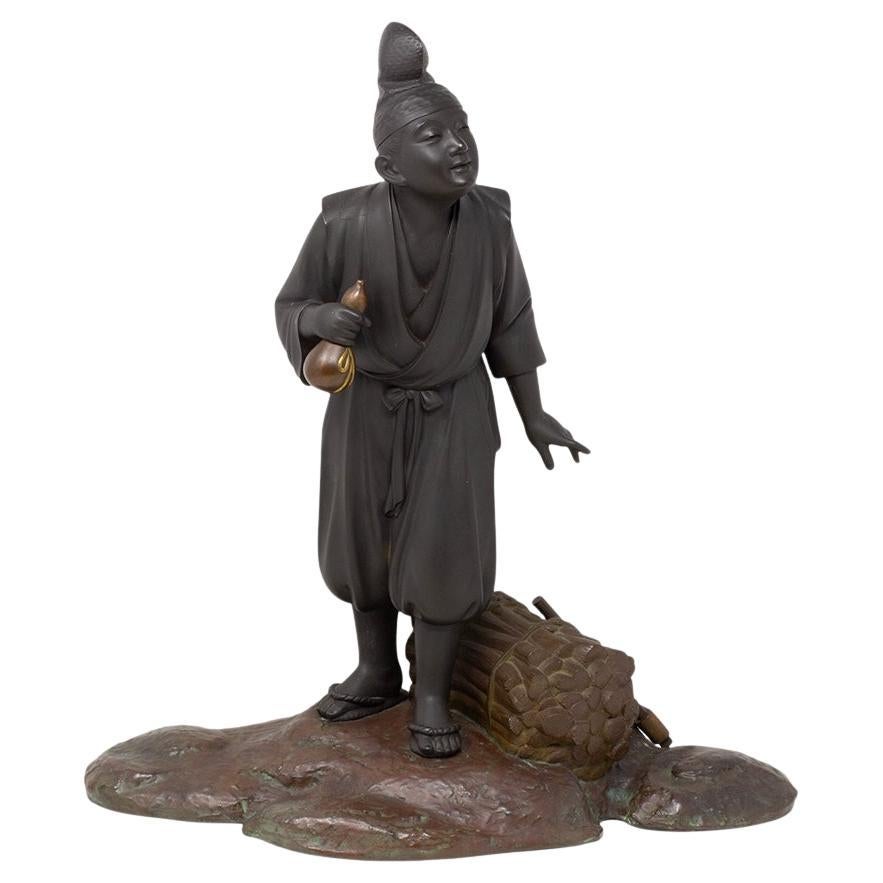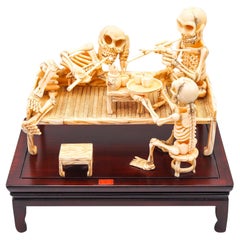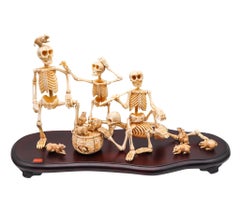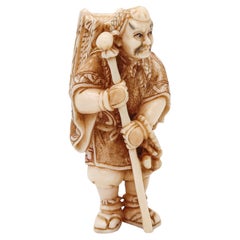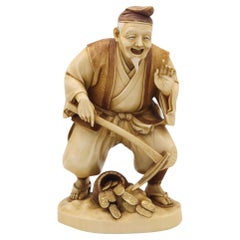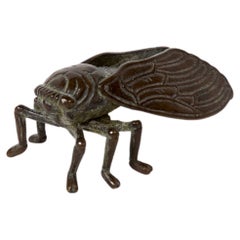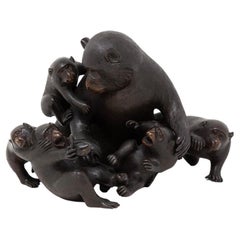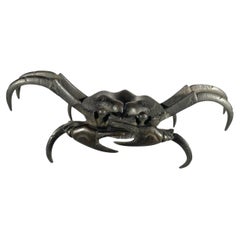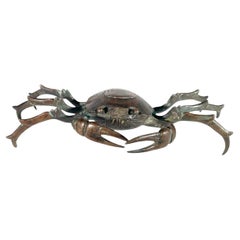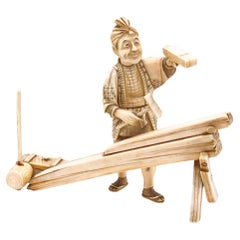
JAPAN 1890 Meiji Okimono Sculpture of a Carpenter Carved In Ivory
View Similar Items
Want more images or videos?
Request additional images or videos from the seller
1 of 13
JAPAN 1890 Meiji Okimono Sculpture of a Carpenter Carved In Ivory
Price:$2,150
$2,950List Price
About the Item
- Dimensions:Height: 5.8 in (14.74 cm)Width: 7.47 in (18.98 cm)Depth: 2.25 in (5.72 cm)
- Style:Meiji (Of the Period)
- Materials and Techniques:Ivory,Hand-Carved
- Place of Origin:
- Period:
- Date of Manufacture:1890
- Condition:Wear consistent with age and use. The overall condition of this okimono is excellent. Beside the little normal wear, there is no damage and all parts are secured in their settings. This piece has been carefully inspected to guarantee the condition and authenticity.
- Seller Location:Miami, FL
- Reference Number:Seller: D071024RARK/.98541stDibs: LU8303240693692
About the Seller
5.0
Gold Seller
Premium sellers maintaining a 4.3+ rating and 24-hour response times
1stDibs seller since 2023
219 sales on 1stDibs
Typical response time: 3 hours
Authenticity Guarantee
In the unlikely event there’s an issue with an item’s authenticity, contact us within 1 year for a full refund. DetailsMoney-Back Guarantee
If your item is not as described, is damaged in transit, or does not arrive, contact us within 7 days for a full refund. Details24-Hour Cancellation
You have a 24-hour grace period in which to reconsider your purchase, with no questions asked.Vetted Professional Sellers
Our world-class sellers must adhere to strict standards for service and quality, maintaining the integrity of our listings.Price-Match Guarantee
If you find that a seller listed the same item for a lower price elsewhere, we’ll match it.Trusted Global Delivery
Our best-in-class carrier network provides specialized shipping options worldwide, including custom delivery.More From This Seller
View AllJAPAN 1890 Meiji Period Okimono Sculpture Of A Group Of Skeletons Smoking
Located in Miami, FL
Sculptural signed Okimono from the Japanese Meiji period (1868-1912).
Very rare, unusual and large sculptural assembling of a dysplaying piece of okimono. Created in Japan during the imperial period of the Meiji (1868-1912). This extraordinary okimono was carefully carved depicting a group of three intricately and realistically rendered carousing skeletons (Gaikotsu) in relax and resting position, drinking and smoking. Two of them, probably males representations are resting on a wicker sofa. The third, is a woman seated in a lower stool...
Category
Antique 1890s Japanese Meiji Sculptures and Carvings
Materials
Wood, Lacquer
JAPAN 1890 Meiji Period Okimono Sculpture With A Group Of Skeletons Playing
Located in Miami, FL
A signed Okimono from the Japanese Meiji period (1868-1912).
Very rare, unusual and large sculptural assembling of a dysplaying piece of okimono. Created in Japan during the imperia...
Category
Antique 1890s Japanese Meiji Sculptures and Carvings
Materials
Wood, Lacquer
JAPAN 1890 Meiji Sculptural Polychromate Netsuke Of a Yamabushi
Located in Miami, FL
Japanese Meiji period netsuke. of a Yamabushi.
This is an exceedingly beautiful and intricate carved netsuke, created during the imperial Japan in the Meiji period, back in he 1890....
Category
Antique 1890s Japanese Meiji Sculptures and Carvings
Materials
Bone
JAPAN 1890 Meiji Carved Figure of Fortune God Daikoku As a Farmer With Coins
Located in Miami, FL
A Japanese carved sculpture of Daikoku.
Magnificent sculpture of the god of the fortune Daikoku WITH OVER 100 YEARS OLD, created in Japan during the Meiji period, circa 1890. The ca...
Category
Antique 1890s Japanese Meiji Sculptures and Carvings
Materials
Gold
KAZUYOSHI Japan Meiji 1890 Box In Lacquered And Gilt Wood Draped Seated Women
Located in Miami, FL
A Meiji lacquered box in the shape of a seated lady made by Meigetsusai Kazuyoshi.
This is a n extremely rare decorative box made in the shape of a ...
Category
Antique 1890s Japanese Meiji Sculptures and Carvings
Materials
Gold Leaf
JAPAN 1890 Shibayama Carved Cards Holder In With Genuine Gemstones
Located in Miami, FL
Japanese Shibayama cards case holder.
This is a lovely late 19th century Imperial Japan, Gold lacquer and Shibayama cards case. Created during the the Meiji period (1868-1912), the ...
Category
Antique 1890s Japanese Meiji Sculptures and Carvings
Materials
Multi-gemstone, Gold
You May Also Like
Japan bronze cicada sculpture okimono Meiji
Located in PARIS, FR
Bronze sculpture with dark brown patina of a cicada.
The cicada (in Japanese, semi) is considered as a symbol of humanity. Together with a praying mantis and a spider, they represen...
Category
Antique Late 19th Century Japanese Japonisme Sculptures and Carvings
Materials
Bronze
Japanese Meiji Period Bronze Monkey Group Sculpture Okimono Shosai
Located in Newark, England
Featuring Seven Japanese Macaques
Form our Japanese collection, we are delighted to offer this Japanese Bronze Monkey Group by Shosai. The Japanese Bronze Group displaying a male father monkey and his infants playing around and being mischievous with Persimmon fruit. The monkeys modelled as Japanese macaque monkeys (snow monkey). The bronze okimono is beautifully patinated with a highly lifelike and naturalistic casting signed to the underside Shosai 正齊鋳. The Bronze group dates to the Meiji Period (1868-1912) circa 1885.
Japanese macaque (snow monkey) is a terrestrial Old World monkey species that is native to Japan. They are known as snow monkeys because some live in areas where snow covers the ground for long periods each year hence their nickname. No other non-human primate lives further north or in a colder climate than the snow monkey. Individuals have brownish grey fur, pinkish-red faces, and short tails. Two subspecies are known and their conservation Status is of least concern. In Japan, the species is known as Nihonzaru ニホンザル, 日本 (Japan/Nihon) and saru 猿 (monkey) to distinguish it from other primates, but the Japanese macaque is the only species of monkey in Japan.
The Japanese macaque features heavily in the religion, folklore, and art of Japan, as well as in proverbs and idiomatic expressions in the Japanese language. They are often seen in paintings, block prints and represented in all manner of carvings from Okimono to netsuke. Many of these art forms reside in the world’s most famous museums and collections, some of the most prominent pieces by artists such as Mori Sosen and Kawanabe Kyosai. In Shinto belief (Japan’s indigenous religion/nature religion) legendary mythical beasts known as raiju sometimes appeared as monkeys and kept Raijin (the god of lightning/storms) company. In another well known tale the three wise monkeys who warn people to “see no evil, hear no evil and speak no evil” can be seen depicted in relief over the door of the famous Tosho-gu shrine in Nikko.
Meiji Period was an era of Japanese history that spanned from 1868 to 1912. It was the first half of the Empire of Japan, when the Japanese people began to build a paradigm of a modern, industrialised nation state and emergent great power, influenced by Western countries and aesthetics. As a result of radically different ideas, the changes to Japan were profound and it affected the social structure, politics, economy, military, and foreign relations across the board. The period corresponded to the reign of Emperor Meiji and was preceded by the Keio era and was succeeded by the Taisho era.
Cultural Art during the Meiji Period was of particular interest to the government and they overhauled the art export market which in turn promoted Japanese arts via various world’s fairs, beginning in Vienna at the world fair in 1873. The government heavily funded the fairs and took an active role organising how Japan’s culture was presented to the world including creating a semi-public company named Kiritsu Kosho Kaisha (First Industrial Manufacturing Company). The Kiritsu Kosho Kaisha was used to promote and commercialise exports of Japanese art and established the Hakurankai Jimukyoku (Exhibition Bureau) to maintain quality standards. For the 1876 Centennial International Exhibition in Philadelphia, the Japanese government created a Centennial Office and sent a special envoy to secure space for the 30,000 items that would be displayed. The Imperial Household also took an active interest in arts and crafts, commissioning works by select artists to be given as gifts for foreign dignitaries further emphasising the high quality and importance of Japanese art. Just before the end of the 19th century in 1890, the Teishitsu Gigeiin (Artist to the Imperial Household) system was created to recognise distinguished artists. These artists were selected for their exceptionally high quality wares and talent in their own industry. Over a period of 54 years Seventy artists were appointed, amongst these were ceramicist Makuzu Kozan and cloisonné enamel artist...
Category
Antique Late 19th Century Japanese Meiji Sculptures and Carvings
Materials
Bronze
Large Japanese Meiji Period Bronze Crab (C) Okimono
Located in Chapel Hill, NC
Realistically modeled Japanese okimono of a crab raised on its toes. I of 5 designated by the (C) in the title.
Category
Antique Late 19th Century Japanese Meiji Sculptures and Carvings
Materials
Bronze
Large Japanese Meiji Period Bronze Crab (B) Okimono
Located in Chapel Hill, NC
Large Japanese naturalistically modeled bronze okimono in the form of a crab. One of 5 designated by the (B) in the title.
Category
Antique Late 19th Century Japanese Meiji Sculptures and Carvings
Materials
Bronze
Signed Japanese Meiji Period Bronze Crab (E) Okimono
Located in Chapel Hill, NC
Signed Japanese okimono of a realistically modeled crab raised up on its toes and with claws raised. One of 5 designated by (E) in the title.
Category
Antique Late 19th Century Japanese Meiji Sculptures and Carvings
Materials
Bronze
Japanese Tokyo School Bronze Okimono of a Farmer, Meiji Period
Located in Austin, TX
A very fine and detailed Tokyo School cast bronze okimono (decorative sculpture) of a smiling farmer, Meiji period, late 19th century, Japan.
The e...
Category
Antique Late 19th Century Japanese Meiji Sculptures and Carvings
Materials
Bronze
Recently Viewed
View AllMore Ways To Browse
Netsuke Cabinet
Antique Ivory Netsukes
Okimono Ivory
Japanese Okimono Ivory
Meiji Okimono Ivory
Netsuke Display
Iki Ningyo
Antique Wooden Doors Pakistan
Chinese Dragon Lantern Stand
Gosho Doll
Gosho Ningyo
Guan Yin Carved Head
Hand Carved Wooden Balinese Busts
Iron Rooster Hen
Khmer Lingam
Netsuke Rat
Sang Min Lee
Vintage Cast Iron Rabbit
